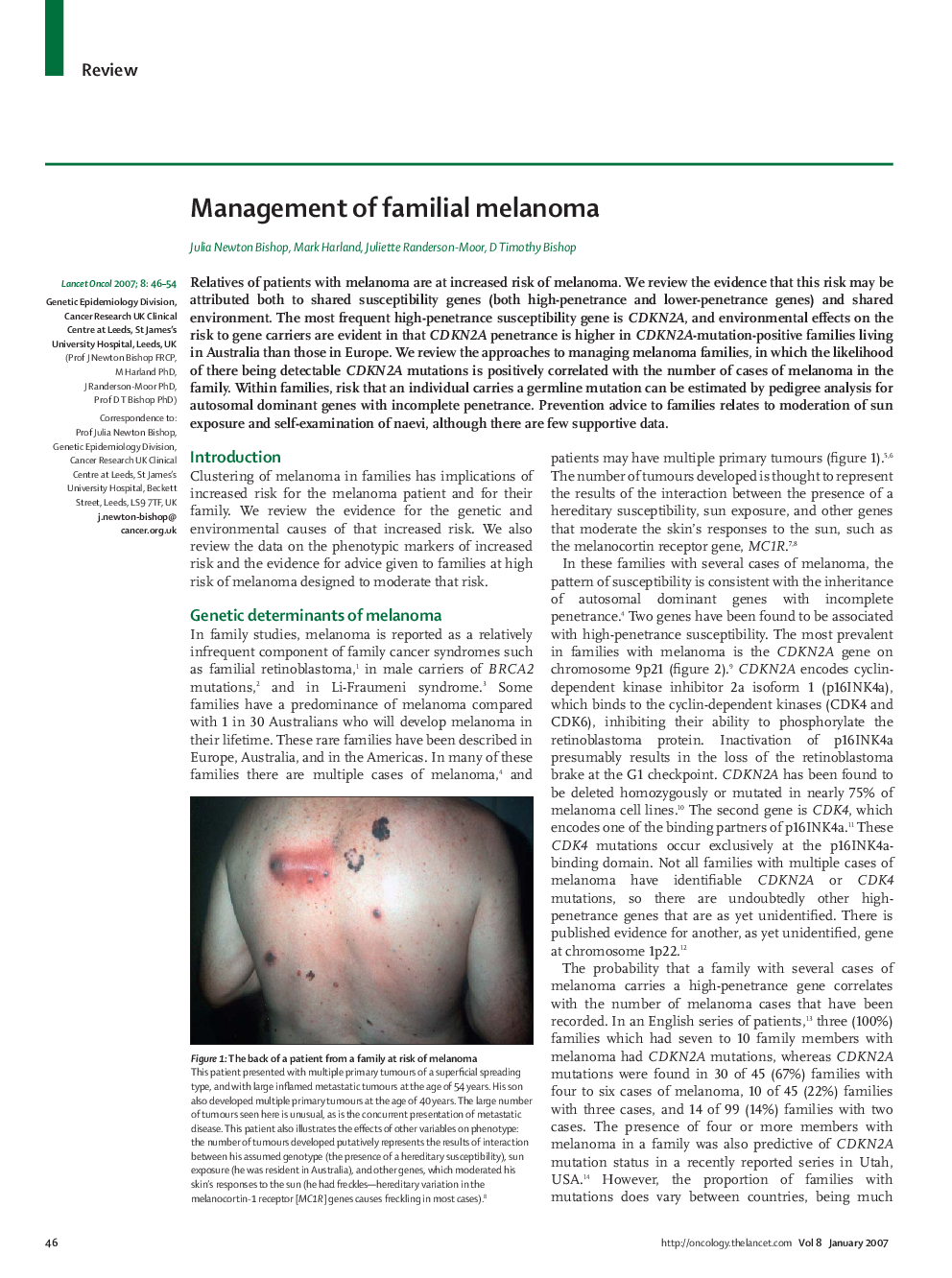| Article ID | Journal | Published Year | Pages | File Type |
|---|---|---|---|---|
| 3995788 | The Lancet Oncology | 2007 | 9 Pages |
SummaryRelatives of patients with melanoma are at increased risk of melanoma. We review the evidence that this risk may be attributed both to shared susceptibility genes (both high-penetrance and lower-penetrance genes) and shared environment. The most frequent high-penetrance susceptibility gene is CDKN2A, and environmental effects on the risk to gene carriers are evident in that CDKN2A penetrance is higher in CDKN2A-mutation-positive families living in Australia than those in Europe. We review the approaches to managing melanoma families, in which the likelihood of there being detectable CDKN2A mutations is positively correlated with the number of cases of melanoma in the family. Within families, risk that an individual carries a germline mutation can be estimated by pedigree analysis for autosomal dominant genes with incomplete penetrance. Prevention advice to families relates to moderation of sun exposure and self-examination of naevi, although there are few supportive data.
